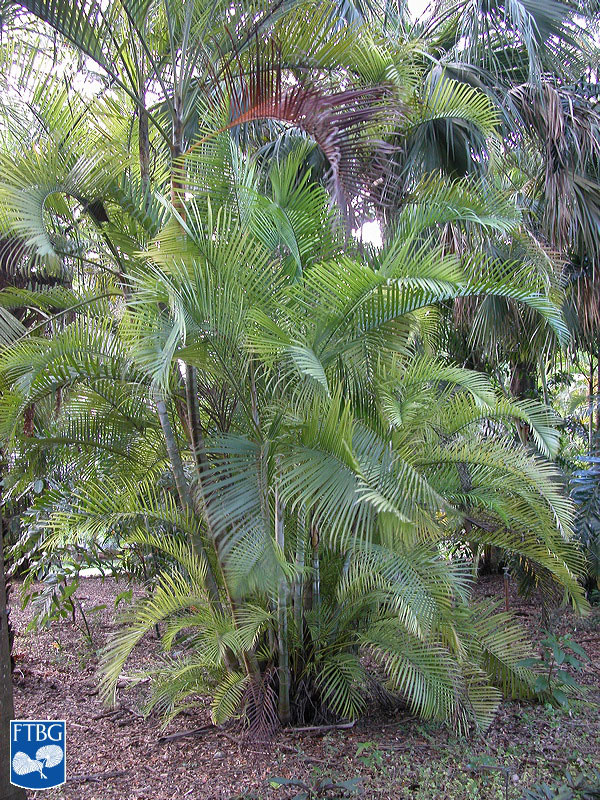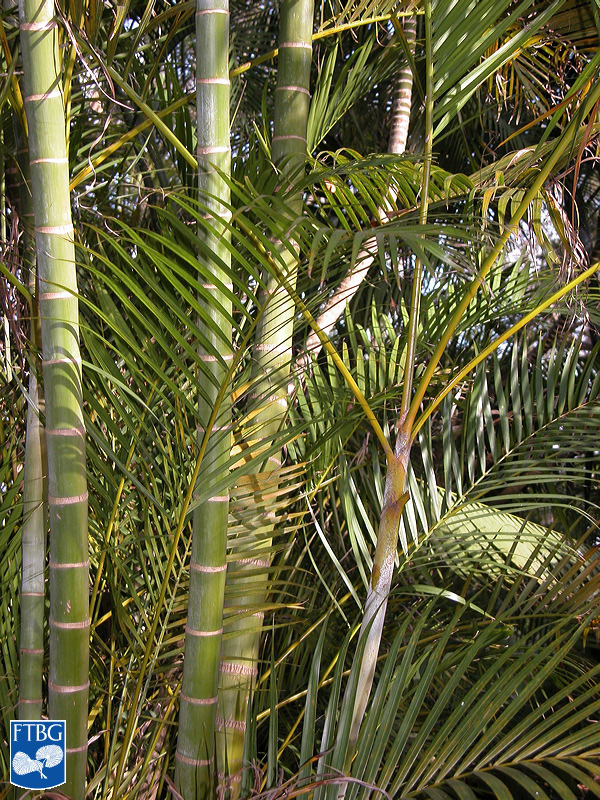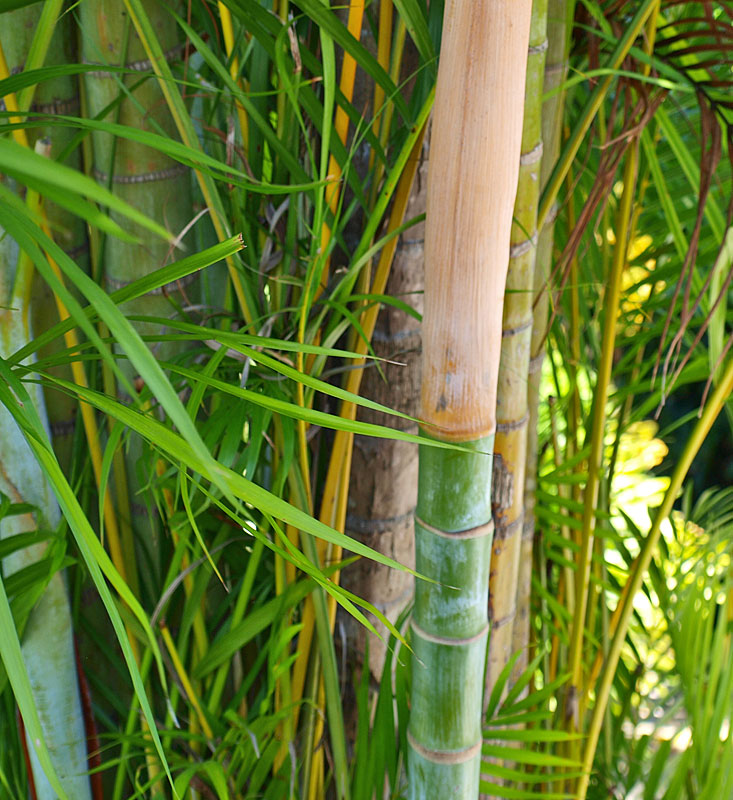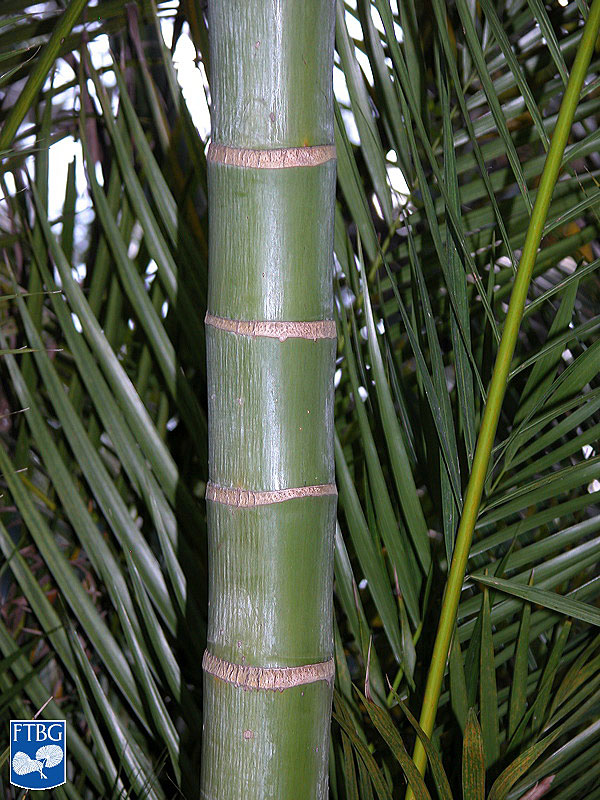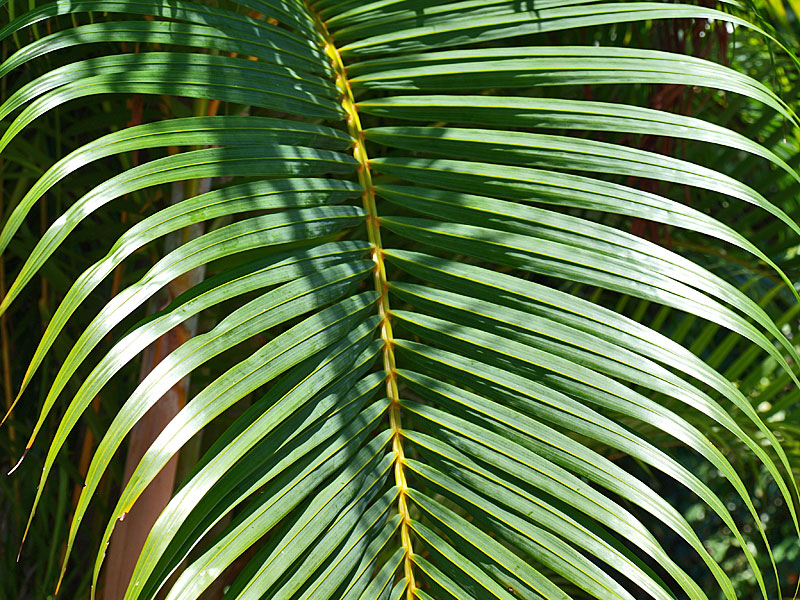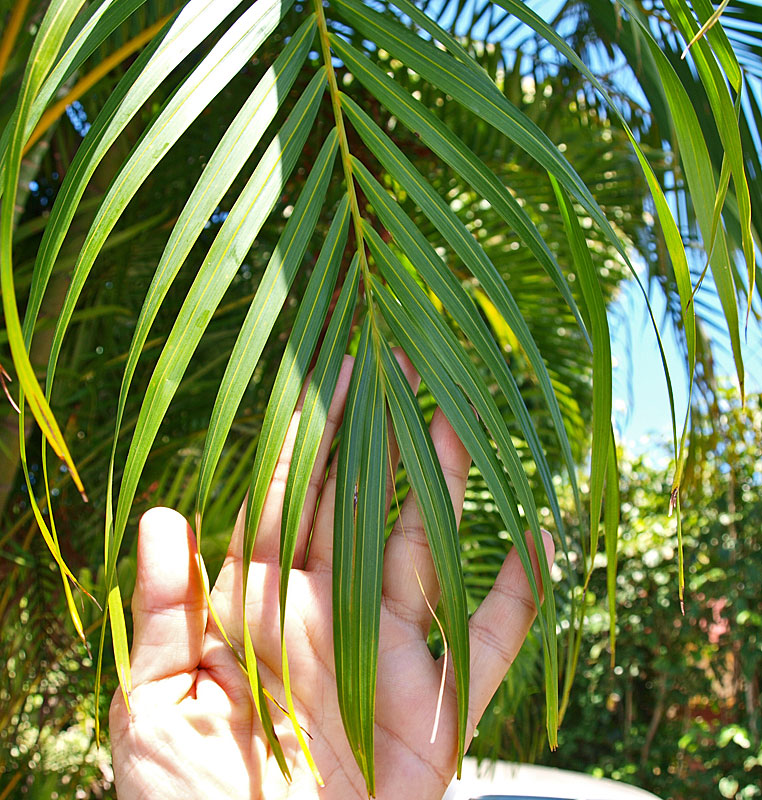Dypsis lutescens
|
Dypsis lutescens habit. Photograph courtesy of Fairchild Tropical Botanical Garden, Guide to Palms http://palmguide.org/index.php |
|
Dypsis lutescens stems. Photograph courtesy of Fairchild Tropical Botanical Garden, Guide to Palms http://palmguide.org/index.php |
|
Dypsis lutescens leaf scar rings |
|
Dypsis lutescens leaf scar rings. Photograph courtesy of Fairchild Tropical Botanical Garden, Guide to Palms http://palmguide.org/index.php |
|
Dypsis lutescens leaflets with yellow leaf rachis |
|
Dypsis lutescens leaflet tips |
Common name
areca palm, butterfly palm, yellow bamboo palm
Description
Stems: Clustering, to 7 m tall and 12 cm in diameter, sometimes bulging at the base, green or yellow-green with conspicuous leafleaf:
in palms -- the leaf blade (which is usually divided into leaflets or leaf segments), the petiole (or leaf stalk) and the sheath (which forms the attachment of the leaf to the stem)
scars 2-12 cm apart. Leaves: Pinnatepinnate:
like a feather; palms with pinnate leaves usually have compound leaflets attached to a rachis, although a pinnate leaf may be entire with pinnate veins (e.g., <em>Chamaedorea metallica</em>)
, reduplicatereduplicate:
Most palm leaflets or leaf segments are obviously folded. If the folds create an upside-down V-shape, with the margins lower than the midrib (so that rain might "run off the roof"), the folding is reduplicate.
, to 3 m long, with yellow petiole, linearlinear:
term to describe leaves and leaflets that are narrow with nearly parallel margins; like a line
leaflets regularly arranged and held at a 90° angle to the yellow or yellow-orange rachisrachis:
an extension of the petiole through the blade of a pinnate leaf to which leaflets are attached
, forming a graceful V-shape. The crown shaftcrown shaft:
a cylinder of clasping leaf sheaths toward the apex of the stem, found in some pinnate-leaved palms (e.g., <em>Wodyetia bifurcata</em>)
is yellowish with a white waxy covering. Upper and lower leaflet surfaces are glossy green to yellow-green, without spines; the prominent midrib is yellowish. Flowers and fruits: Inflorescences to 1 m long, branched to three orders. Yellow male and female flowers are borne on the same plants. The spherical fruits, 2.5 cm in diameter, are yellow to purple when ripe.
Diagnostic features
Field: Clustering palm with bright green or yellow-green stem and conspicuous leafleaf:
in palms -- the leaf blade (which is usually divided into leaflets or leaf segments), the petiole (or leaf stalk) and the sheath (which forms the attachment of the leaf to the stem)
scars and pinnatepinnate:
like a feather; palms with pinnate leaves usually have compound leaflets attached to a rachis, although a pinnate leaf may be entire with pinnate veins (e.g., <em>Chamaedorea metallica</em>)
leaves with yellow petiole, yellow or yellow-orange rachisrachis:
an extension of the petiole through the blade of a pinnate leaf to which leaflets are attached
, and regularly arranged, linearlinear:
term to describe leaves and leaflets that are narrow with nearly parallel margins; like a line
leaflets forming a graceful V-shape.
Lab: Tufts of hairs on the midrib undersurface.
May be confused with
Ptychosperma macarthurii is a somewhat similar clustering palm, but its leaflets have broad, jagged tips, and it lacks the yellow coloring of Dypsis lutescens.
Distribution
Native to Madagascar
Additional comments
Commonly cultivated in Hawaii and as an indoor palm; often seen growing as a hedge.
Scientific name
Dypsis lutescens (H.Wendl.) Beentje & J.Dransf.
Family
Arecaceae/Palmae
Synonyms
Areca lutescens Bory
Chrysalidocarpus glaucescens Waby
Chrysalidocarpus lutescens H. Wendl.
Hyophorbe commersoniana Mart
Hyophorbe lutescens Hort. ex Jum.


